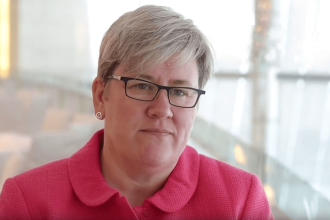By Henry Neondo
In the heart of Molo, Nakuru County, a single older man named Peter Kamanda has taken upon himself the responsibility of protecting and developing what could be termed as a sacred natural site. This site, a small but significant patch of forest, holds deep spiritual and ecological importance for not only himself, but even the local community has come to appreciate the effort.
Sacred natural sites—forests, rivers, mountains, or other natural features revered by communities—are powerful examples of how traditional practices can align with contemporary conservation goals. For Kamanda, the site represents more than just a piece of land; it is a living symbol of the delicate interplay between biodiversity and cultural heritage.
The Role of Sacred Natural Sites in Conservation
Sacred natural sites have long served as custodians of biodiversity. By designating certain areas as sacred, communities effectively create refuges for flora and fauna, shielding them from exploitation.
According to Kamanda, these sites often harbour unique ecosystems, supporting species that may not thrive elsewhere. For Kamanda, the forest he seeks to protect and develop is home to medicinal plants, rare tree species, and a variety of wildlife that are integral to the community’s cultural and ecological fabric.
Patrick Maina noted that in addition to their ecological value, sacred sites preserve cultural heritage. They are places of worship, storytelling, and traditional rituals, connecting communities to their ancestors and reinforcing a shared sense of identity. By maintaining customary laws and practices, Kamanda is safeguarding the intangible cultural values tied to the site, ensuring that these traditions are passed down to future generations.
A Personal Mission
Kamanda’s decision to become a custodian of the sacred site stems from a deep sense of responsibility. He recalls stories from his elders about how the forest was once a sanctuary for community rituals, where every tree and animal had a role in the ecosystem and the spiritual life of the people. However, as modernity encroached, the forest’s significance began to fade, leading to its gradual degradation.
“For my ancestors, the forest was more than just a place; it was a sacred entity that commanded respect,” Kamanda says. “Today, we see it as a resource to exploit, and we risk losing not just the biodiversity but the soul of our community.”
Determined to reverse this trend, Kamanda has embraced the role of a custodian. His mission is twofold: to protect the biodiversity within the site and to revive the traditional practices that once ensured its survival.
Challenges in Preserving Sacred Sites
Kamanda’s journey is not without obstacles. Modern land-use pressures, including agriculture, logging, and urbanization, threaten the integrity of the sacred forest. Economic hardships in Molo have driven many community members to exploit the forest for firewood, charcoal, and timber, often in violation of customary laws.
In addition, the erosion of traditional knowledge poses a significant challenge. Younger generations, drawn to urban lifestyles and influenced by global cultures, are increasingly disconnected from their heritage. “Many young people see our traditions as outdated,” Kamanda laments. “They don’t understand the value of the forest, not just for our culture but for our survival.”
The lack of legal recognition for sacred natural sites further complicates conservation efforts. Without formal protection, these areas are vulnerable to encroachment and exploitation. For Kamanda, this highlights the need for policies that integrate traditional conservation practices into modern frameworks.
The Intersection of Customary Laws and Modern Conservation
Customary laws have historically played a crucial role in protecting sacred sites. In Kamanda’s community, these laws governed how people interacted with the forest, dictating when and where they could collect resources. Rituals and taboos ensured that the forest was not overexploited, fostering a sustainable relationship between people and nature.
Recognizing the value of these practices, Kamanda has been working to revive them. He collaborates with other community elders to document traditional knowledge and uses this as a foundation for educating the community. Through workshops and storytelling sessions, he highlights the relevance of customary laws in addressing modern conservation challenges.
At the same time, Kamanda understands the importance of bridging traditional and modern approaches. He has partnered with local environmental groups to introduce scientific methods for monitoring biodiversity, such as mapping tree species and tracking wildlife populations. This blend of indigenous and scientific knowledge enhances the effectiveness of conservation efforts and builds credibility with external stakeholders.
The Broader Implications of Sacred Site Conservation
Kamanda’s work has implications beyond the borders of his community. Sacred natural sites like the one in Molo are not isolated phenomena; they are part of a global network of culturally significant landscapes that contribute to biodiversity conservation. By protecting these sites, custodians like Kamanda are also contributing to international conservation goals, such as the United Nations Sustainable Development Goals (SDGs) and the Convention on Biological Diversity.
Furthermore, the preservation of sacred sites offers valuable lessons for addressing the global biodiversity crisis. These sites demonstrate that conservation is not just about protecting species but also about maintaining the cultural and spiritual values that sustain human-nature relationships.
Strengthening Community Involvement
For Kamanda, the success of his mission depends on the active involvement of the community. He believes that conservation efforts must be inclusive, drawing on the knowledge, skills, and values of all community members. To this end, he has initiated several programs to engage different groups, from women who possess extensive knowledge of medicinal plants to youth who can use technology to document and share information about the forest.
One of his most innovative initiatives is the establishment of a community-managed forest committee. This committee, composed of elders, youth, and other stakeholders, oversees the conservation of the sacred site. It ensures that customary laws are respected while also advocating for the legal recognition of the forest as a protected area.
A Vision for the Future
Kamanda envisions a future where the sacred forest thrives as both a biodiversity hotspot and a cultural sanctuary. He hopes to see more young people embracing their heritage and taking pride in their role as stewards of the environment. “Our traditions are not just stories; they are solutions,” he says. “If we can combine the wisdom of our ancestors with modern knowledge, we can create a sustainable future for our community.”
To achieve this vision, Kamanda is exploring partnerships with conservation organizations, government agencies, and academic institutions. These collaborations aim to provide resources, technical support, and advocacy to strengthen the protection of sacred natural sites.
Kamanda is a member of the Maendeleo Endelevu a national NGO working that is piloting the agro-ecological farming to integrate traditional knowledge with modern approaches to conservation and agriculture. MEAP is one of the partners of the African Biodiversity Network, supporting communities in building resilience to the impacts of climate change.

MEAP’s work in agroecology, seed saving, and forest management is a hopeful reminder that the future of our planet may lie in reconnecting with the practices and wisdom of the past.
The sacred natural site in Molo, under the stewardship of Peter Kamanda, stands as a testament to the power of tradition in addressing modern conservation challenges. It illustrates how cultural heritage and biodiversity are intertwined, each sustaining the other in a delicate balance.
By striving to maintain customary laws and traditional practices, Kamanda is not only preserving a forest but also reviving a way of life that respects and honors nature. His efforts remind us that conservation is as much about people and their stories as it is about ecosystems and species.
As sacred natural sites continue to face threats worldwide, the case of Molo underscores the urgent need to recognize and support local custodians like Kamanda. Their work holds the key to a more harmonious relationship between humanity and the natural world, ensuring that both biodiversity and cultural heritage endure for generations to come.




